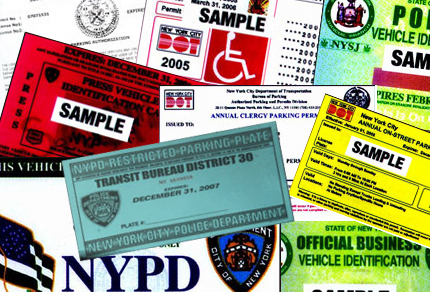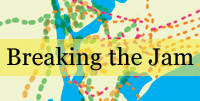
The state legislature's refusal to approve Mayor Michael Bloomberg's plan to collect a fee from drivers entering the most congested parts of Manhattan leaves unanswered the question of how to finance construction of transportation infrastructure vital to the city's future. But on the narrower problem of reducing congestion, New York City has a pricing mechanism it can employ for use of the streets without asking Albany's permission: Parking.
Undervalued parking is a major enticement for people to bring cars to the city. In fact, the availability of free parking at or near the workplace is the single best predictor of whether someone will drive to work. Too many employers provide subsidized parking to their workers. And among those employers are all levels of government and the court systems.
Stop Giving Away the Streets
The mayor recently announced the first steps in controlling the rampant use of "placards" that permit users to park in any legal spot without paying -- and are often abused to include parking illegally, in bus stops, alongside hydrants and even on sidewalks. A city-issued report on placard usage in Lower Manhattan found that "there typically are no available legal spaces" for drivers arriving midday as placard vehicles are ubiquitous -- leaving the new arrivals to drive around, adding to traffic as they seek a space. The report confirmed the popular impression that placard holders often have free rein to ignore the law entirely.
This is not just a Manhattan problem. Free-parking privileges encourage police officers and teachers, in particular, to drive their private cars to precinct houses and schools - all over the city. The same is true for clergy, who receive free spaces in front of their houses of worship. Press and diplomats also have special privileges, which encourage them to use cars.
Even when street parking is not free, it's too cheap - a small fraction of what it costs to park in a garage. Convenient curbside parking should be somewhat less expensive than secure off-street parking, but not to the extent it is now.
The mayor's PlaNYC most famously proposes the congestion charge, but it also includes an initiative to expand the use of Muni-meters to commercial districts throughout the five boroughs. These advanced meters allow parkers to use a variety of cash and non-cash forms of payment. The city should take this opportunity to raise prices for curbside parking - now the cheapest real estate around - and use the available technology to raise and lower prices according to demand.
Keeping Cars Moving
To decrease traffic, parking lanes must cost more, and moving lanes must stay clear. New Yorkers name the same street-clogging problems over and over: double-parking, taxi pickups and drop-offs, and "blocking the box" (entering an intersection when unable to exit it during a signal cycle, thus backing up traffic for at least a block).
Stepping up enforcement of box-blocking is another PlaNYC priority. Unfortunately, it requires Albany's good graces to allow Traffic Enforcement Agents to issue tickets for this infraction - which is technically a moving violation. But the New York Police Department can enforce the gridlock law now -- and should.
The Traffic Congestion Mitigation Commission, which recommended the congestion-pricing program, also suggested adding cab stands at key sites. The city could expand on that idea and identify curb areas -- possibly including vacant bus stops -- for taxi pick-ups and drop-offs.
Cracking down on double-parking requires no new program at all - just making it a priority for law enforcement.
Finally, the city should put an end to practices that increase traffic backups: streets closed for fairs, parades, and motorcades; overzealous security barricades; unnecessary obstructions from construction projects.
These remedies are not glamorous, and they won't yield the funds New York needs for building subways, fixing bridges, and buying buses, but they will help ease the city's traffic for now and until some brave new mayor tries once again to advance some version of congestion pricing.
Hope Cohen is deputy director of the Manhattan Institute's Center for Rethinking Development.Â





